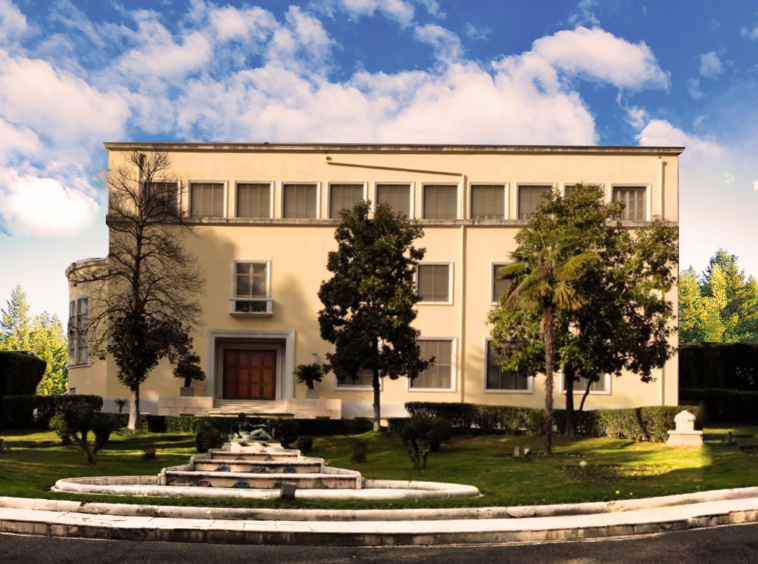Palace of the Brigades
Details
Updated on December 30, 2024 at 2:04 pmInformation
- Author: Julio Berté (original design), Gherardo Bosio (adaptations and completion)
- Year Built: 1936–1941
Description
The Palace of the Brigades, also known as the Presidential Palace, is a remarkable symbol of Albania’s royal past and architectural evolution. Constructed between 1936 and 1941, this iconic structure showcases a blend of Art Deco and monumental rationalism, reflecting both European trends of the era and Albania’s aspirations for modernity.
Historical Context
- Initial Construction:
The palace was commissioned by King Zog in 1936 as a royal residence, designed by Italian architect Julio Berté. Originally conceived as a neoclassical structure, it underwent significant stylistic changes under Gherardo Bosio, who adapted it to align with Art Deco and monumental rationalism. - Completion and Inauguration:
Construction was completed in 1941 by the Italians during their occupation of Albania. The palace was inaugurated by King Victor Emmanuel II, serving as a residence for the Italian viceroy after Albania’s annexation. - Post-Royal Use:
After World War II, the palace was repurposed for official ceremonies under the communist regime. Today, it functions as a venue for presidential events and high-profile gatherings, while retaining its historical and cultural significance.
Architectural Features
- Style:
The exterior and interior of the palace exhibit a harmonious blend of Art Deco and monumental rationalism, characterized by geometric simplicity, clean lines, and imposing proportions. - Interior Design:
The interiors are richly adorned with bespoke furniture, luxurious curtains, and elegant living equipment. These elements exemplify the grandeur and sophistication of its royal origins. - Royal Park:
Surrounding the palace is the Royal Park, a meticulously designed landscape featuring a gallery of sculptures inspired by mythological themes.- Temple of the Muses: Modeled after the classical Temple of the Muses, the park celebrates the myth of Apollo and the muses, brought to life by sculptor Antonio Mariani.
- Artistic Highlights: The park includes masterpieces from the 1930s and 1940s, such as Daphne, Danaida, reliefs from the Palatine Chapel, and the ornate main gate, showcasing a blend of natural beauty and artistic expression.
Cultural and Historical Significance
The Palace of the Brigades is more than a former royal residence; it is a testament to Albania’s complex history of monarchy, occupation, and modernization. Its architecture reflects the shifting political and cultural landscapes of the early 20th century, while its artistic treasures provide insight into the aesthetic sensibilities of the time.
Legacy
Today, the Palace of the Brigades stands as one of Tirana’s most important historical landmarks. Its royal heritage, architectural innovation, and artistic richness make it a symbol of Albania’s cultural and political evolution. Its continued use for ceremonial purposes ensures that it remains an active part of the nation’s identity.
Address
Open on Google Maps- City Tirana


